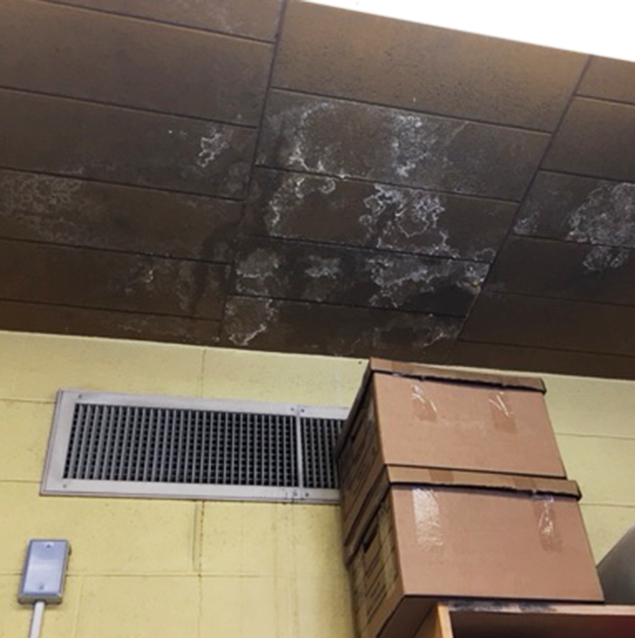If your local school is in poor condition, there can be a variety of consequences:
1. School conditions impact your child’s learning. Many Ontario classrooms are as cold as 12 degrees in the winter, while during the fall and spring, classroom temperatures can soar above 35 degrees. Studies show there is a narrow band of optimal air temperature associated with learning – around 22 degrees. Studies also show that poor air quality (peeling paint, mould, poor ventilation, etc.) increases incidents of asthma, the leading cause of student absence.
How hot must it be before it is #TooHotToLearn? In my classroom of 28 Kindergarteners, it was 29 C at 94% humidity for most of the day. This feels like 38 C (almost 100 F). How can they learn? The floor was slick with moisture and so were we! @ETFOeducators pic.twitter.com/QABgieG3iR
— Shawn Crowell (@ShawnCrowell) September 4, 2018
2. Principals have less time to support teaching when the roof leaks. Naturally, safety is the priority during repairs. How can a principal effectively lead a school while they are also the construction manager and PR/communications professional meant to effectively communicate logistics and manage expectations? Being a principal is a full-time job without adding the layer of complexity of being a construction manager or boiler specialist.
3. A whole neighbourhood can suffer. Schools are community hubs that house the majority of childcare facilities in Ontario. Soccer clubs use the fields, Girl Guides use the gyms, and seniors use the auditoriums.
Scarborough’s Timberbank PS is crumbling. School building needs heat, water, fire alarms, door handles, wiring; student learning is impacted. But these buildings provide spaces for many urban residents, not just students.
Schools Are Community.#Agincourt #ScarbTO #onted pic.twitter.com/vxfncZKha2— Fix Our Schools (@Fix_Our_Schools) December 2, 2018
4. Reactive repairs are costing taxpayers. When a roof leaks, damage is done to the building’s interior. We know that reactive repairs can cost up to three times more than routine, proactive maintenance. School boards can only maximize efficiency in repairing and maintaining schools when funding from the province is adequate and stable from year to year.

